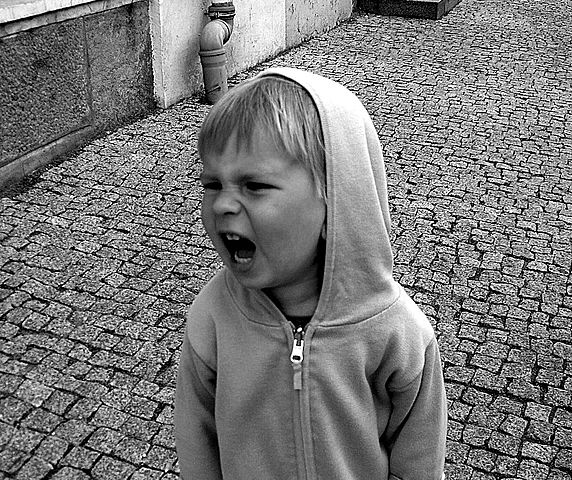Why does everyone think that “me too” is the stepping stone to success?
Let’s discuss:
“Me too” in music
Years ago I worked at my college’s 10 watt radio station, and therefore had access to a lot of records (yes, this was a long time ago).
And one of those records was so unmemorable that it was memorable.
The album, recorded in the early to mid 1960s, trumpeted the fact that the group that recorded the album was extremely versatile. You see, the record not only included surf songs, but also included car songs!
The only problem? The album was NOT by the Beach Boys.
Instead, the album was from some otherwise unknown band that was trying to achieve success by doing what the competition did. (In this case, the Beach Boys.)
I can’t remember the name of the band, and I bet no one else can either.
“Me too” in computing and lawn care
Sadly, this tactic of Xeroxing (or Mitaing) the competition is not confined to popular music. Have you noticed that so many recipes for marketing success involve copying what your competitors do?
- Semrush: “Analyze your competitors’ keywords that you are not ranking for to discover gaps in your SEO strategy.”
- iSpionage: “If you can emulate your competitors but do things slightly better you have a good chance of being successful.”
- Someone who shall remain nameless: “Look at this piece of collateral that one of our competitors did. We should do something just like that.”
And of course the tactic of slavishly copying competitors has been proven to work. For example, remember when Apple Computer adopted the slogan “Think The Same” as the company dressed in blue, ensured all its computers could run MS-DOS, and otherwise imitated everything that IBM did?
OK, maybe not.
“But John,” you are saying. “That’s unfair. Not everyone can be Apple.”
My point exactly. Everyone can’t be Apple because they’re so busy trying to imitate someone else—either a competitor or some other really popular company.
Personally, I’m waiting for some company to claim to be “the Bredemarket of satellite television. (Which would simply mean that the company would have a lot of shows about wildebeests.) But I’ll probably have to wait a while for some company to be the Bredemarket of anything.
(An aside: while talking with a friend, I compared the British phrase “eating your pudding” to the American phrase “eating your own dog food,” although I noted that “I like to say ‘eating your own wildebeest food‘ just to stand out.” Let’s see ChatGPT do THAT.)
“Me too” in identity verification
Now I’ll tread into more dangerous territory.
Here’s an example from the identity/biometric world. Since I self-identity (heh) as the identity content marketing expert, I’m supremely qualified to cite this example.
I spent a year embedded in the identity verification industry, and got to see the messaging from my own company and by the competition.
After a while, I realized that most of the firms in the industry were saying the same thing. Here are a few examples. See if you can spot the one word that EVERY company is using:
- (Company I) “Reimagine trust.”
- (Company J) “To protect against fraud and financial crime, businesses online need to know and trust that their customers are who they claim to be — and that these customers continue to be trustworthy.”
- (Company M) “Trust is the core of any successful business relationship. As the digital revolution continues to push businesses and financial industries towards digital-first services, gaining digital trust with consumers will be of utmost importance for survival.”
- (Company O) “Create trust at onboarding and beyond with a complete, AI-powered digital identity solution built to help you know your customers online.”
- (Company P) “Trust that users are who they say they are, and gain their trust by humanizing the identity experience.”
- (Company V) “Stop fraud. Build trust. Identity verification made simple.”
Yes, these companies, and many others, prominently feature the t-word in their messaging.
Don’t “me too” in identity verification
Now perhaps some of you would argue that trust is essential to identity verification in the same way that water is essential to an ocean, and that therefore EVERYBODY HAS to use the t-word in their communications.
Don’t tell that to Black Ink Tech, who uses the trademark “Truth Over Trust.”
And no, they didn’t violate any law by using an unapproved word. Instead, they got attention by standing out from the crowd.
Here’s another example that I can’t discuss fully, but I’ll say what I can.
I was talking to a Bredemarket biometric content prospect (not one of the ones listed above), and as is my practice, I started by asking the “why” question.
After all, if I was going to create content for this prospect, we had to ensure that the content stood out from their competitors.
Without revealing confidential information, I can say that I asked the firm why they were better than every other firm out there, and why all the other firms sucked. And the firm provided me with a compelling answer to that question. I can’t reveal that answer, but you can probably guess that the word “trust” was not involved.
A final thought
So let me ask you:
Why is YOUR firm better than every other firm out there, and why do all or YOUR competitors suck?
Your firm’s survival may depend upon communicating that answer.
Take care of yourself, and each other.













































